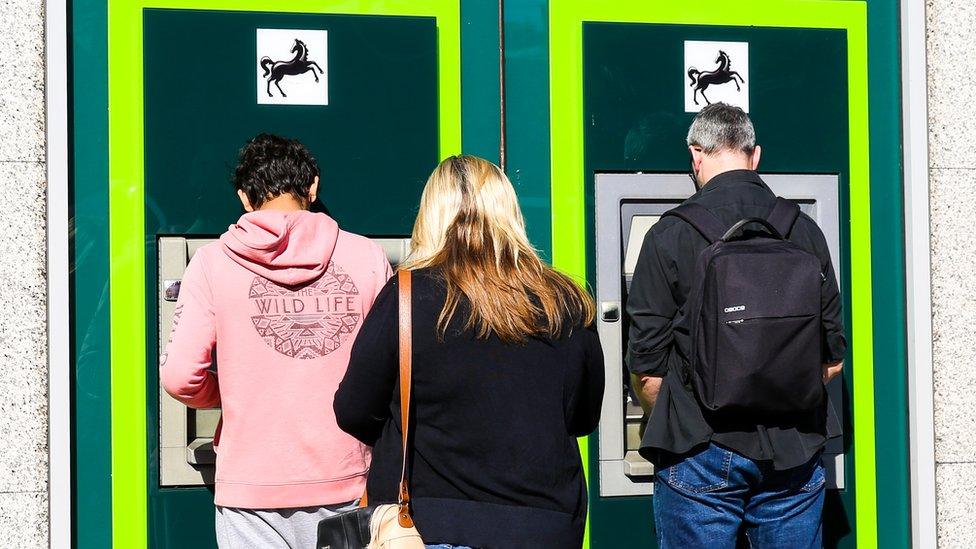Banks asked to explain 40% overdraft rates
- Published
- comments

The UK's financial regulator has asked banks to explain how they have decided their new overdraft rates.
The Financial Conduct Authority (FCA) said most High Street banks had set "very similar prices", after it demanded changes to the system.
Several big brands including Santander, Lloyds Banking Group and HSBC are set to bring in a 39.9% rate this year.
The FCA has sent a letter to banks, external, asking them to explain what influenced their decision.
The City regulator has also asked how the banks will deal with any customers who could be worse off following the changes.
It said some firms could reduce or waive interest for customers who are in financial difficulty because of their overdraft.

Christopher Woolard, interim chief executive at the FCA, told the BBC's Today programme that seven in 10 customers would be better off or unaffected by the new rules.
"If you had an unarranged overdraft before, you saw some rates that were 10 times higher than the equivalent payday loans.
"The reforms force banks to publish clear headline rates, without fixed fees and charges in them. In some banks, as many as nine in 10 customers will be better off, or no worse off."
What's changing for overdraft charges?
The FCA has introduced tough new rules for the "dysfunctional" overdraft market. It says it wants to get rid of "confusing" fees for customers.
The new rules, which come into force in April this year, will stop banks and building societies from charging higher prices for unarranged overdrafts than for arranged overdrafts.
They will also require providers to charge a simple annual interest rate on all overdrafts and to get rid of fixed daily or monthly fees.
However, some analysts have warned that steep overdraft rates could become "the new normal".

Is this competition?

As the hackneyed phrase says, we change partners more often than we switch bank accounts. So, when the FCA announced what it called the biggest overhaul of overdrafts for generation, its aim was to inspire competition.
The theory is that a clear, simple overdraft interest rate allows customers to compare and move current accounts, potentially saving them a lot of money.
Now the banks have pretty much clustered around the same, somewhat expensive 40% rate, there is little sign of any competition at all.
It should not be forgotten that the changes will mean more support for those facing financial trouble, and those who used to regularly bust their overdraft limit will not be hit so hard.
But you can understand the accusations that the reforms have backfired for the regulator, and why it has now responded by asking questions of the banks.

Most banks and building societies have chosen to set a rate very close to 40%.
Lloyds Banking Group, which includes the Halifax bank, was one of the latest big brands to announce most customers will soon pay an annual rate of 39.9% to dip into their overdraft. That means they would pay £39.90 for each £100 borrowed in an overdraft for a whole year.
The FCA has previously acknowledged that banks might increase their arranged overdraft prices as a result of the new rules.
But it argues the overall effect will still be better for customers - and increased competition between providers as a result of the changes will constrain any price increases.
- Published22 January 2020

- Published7 June 2019
